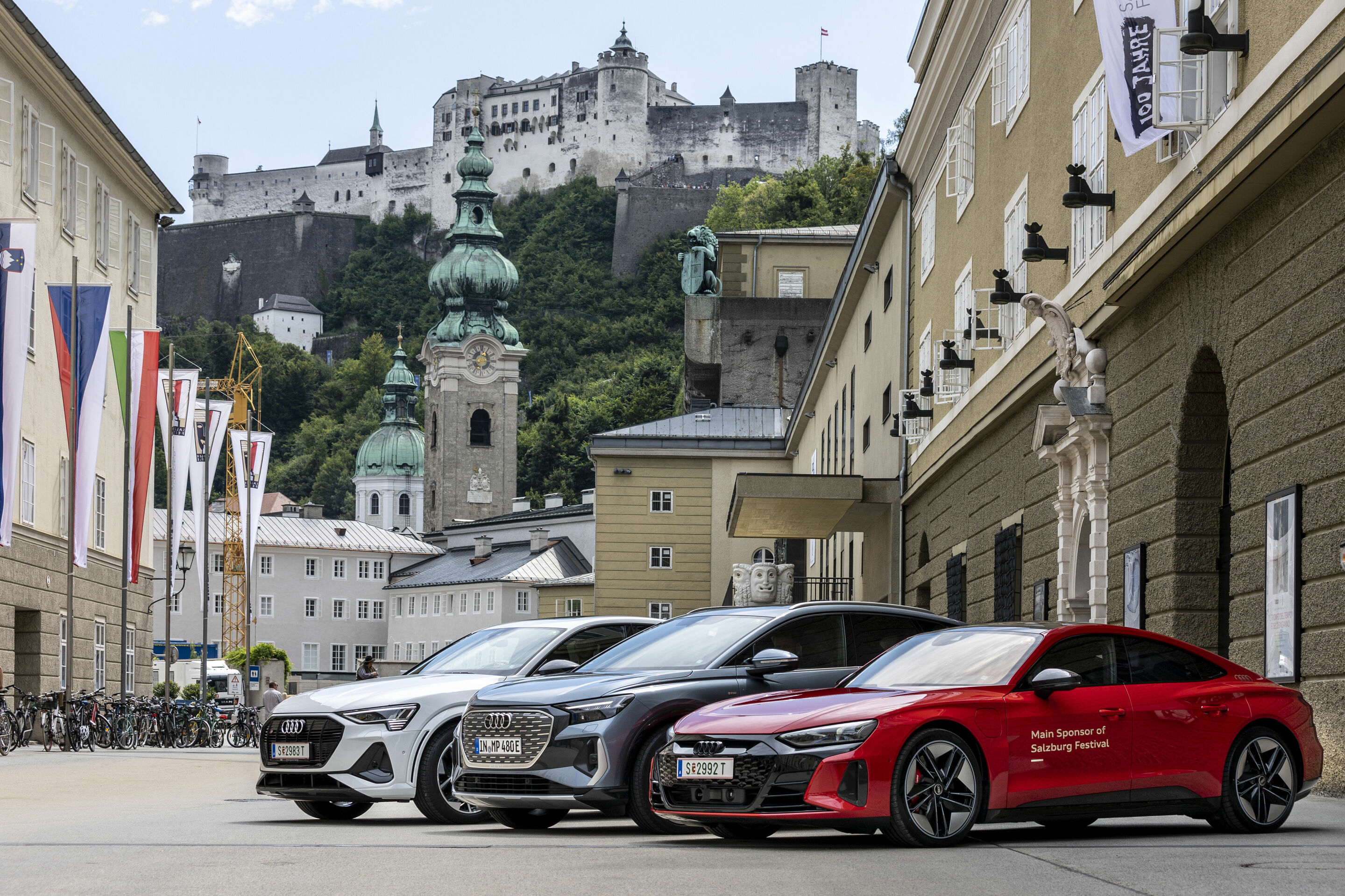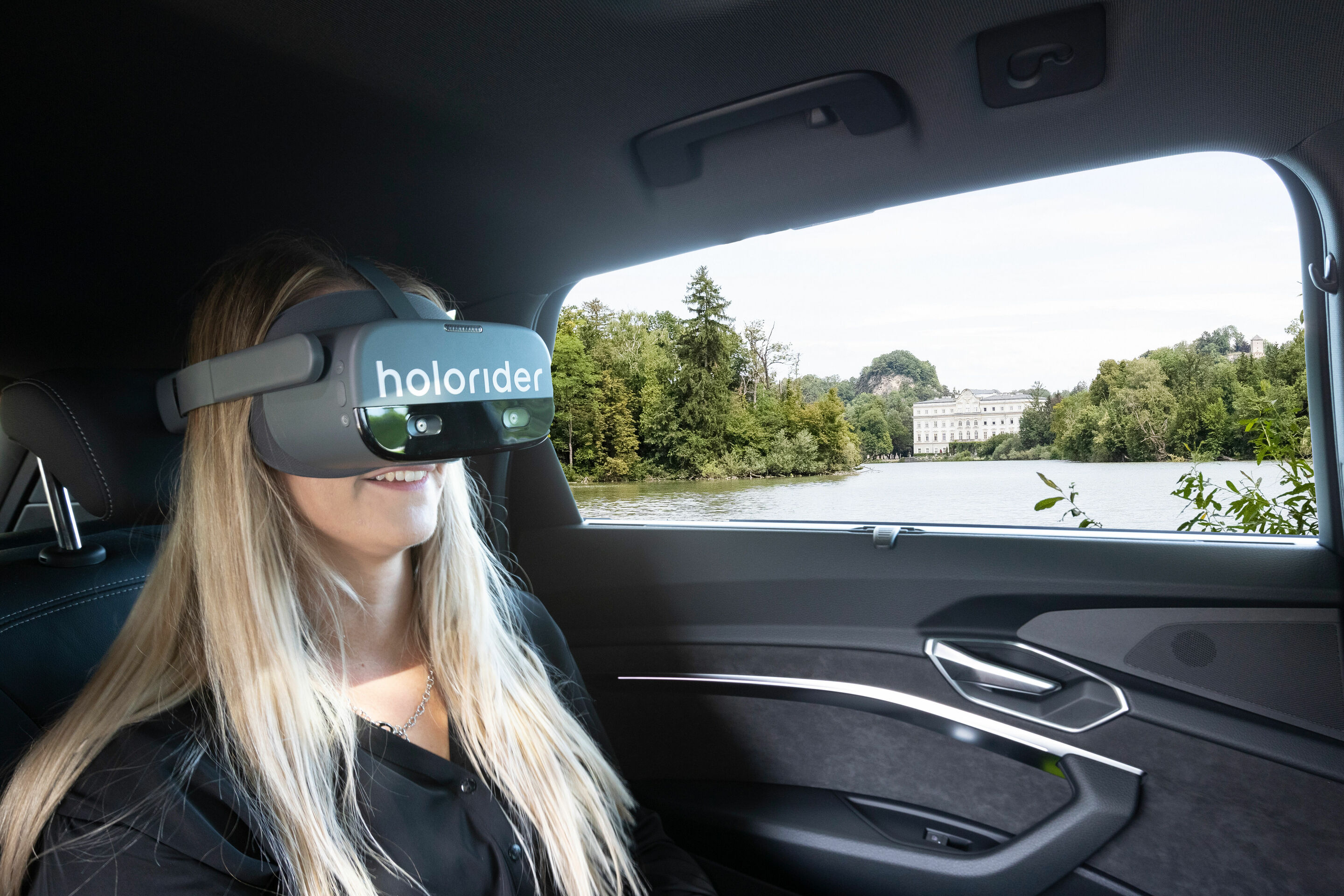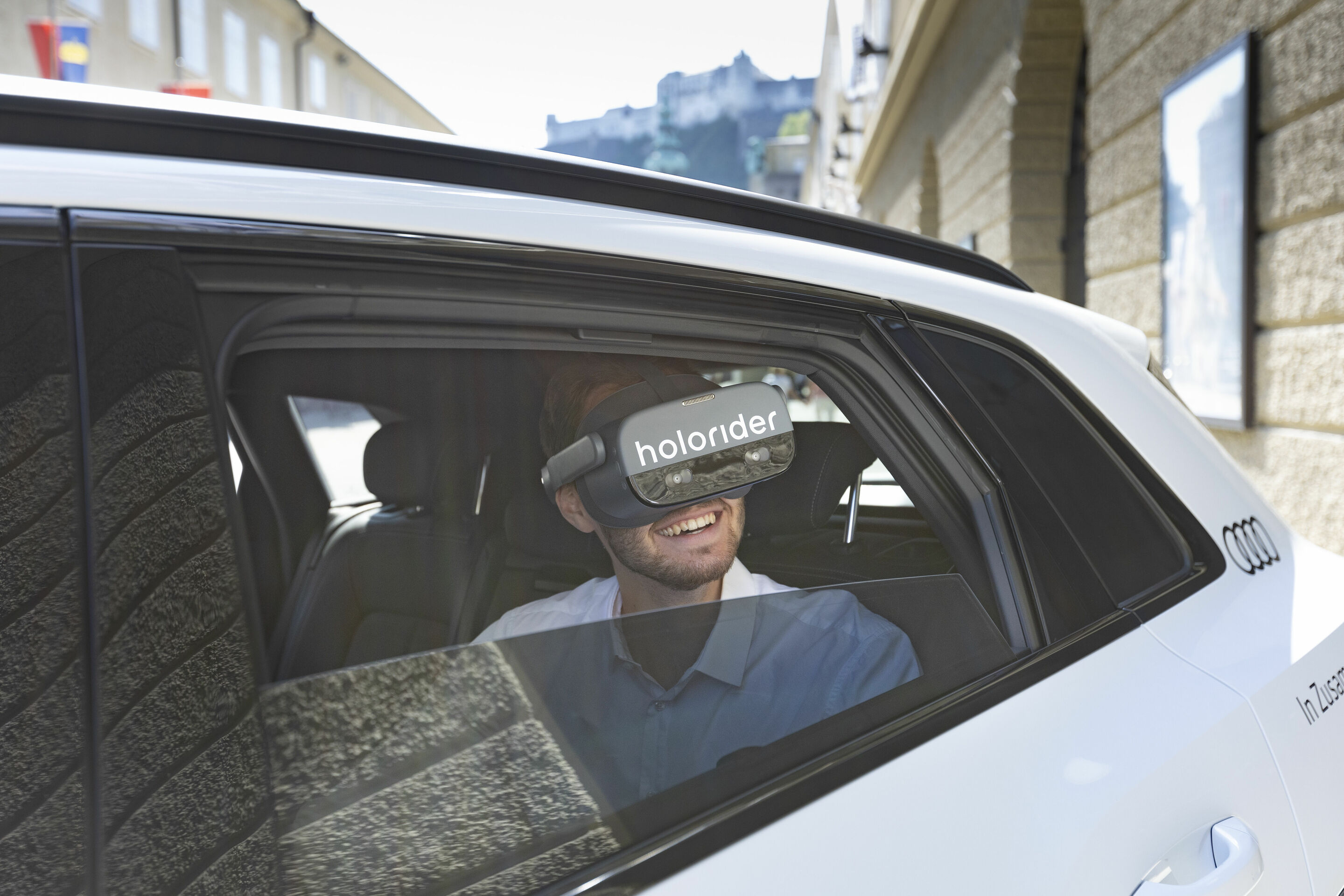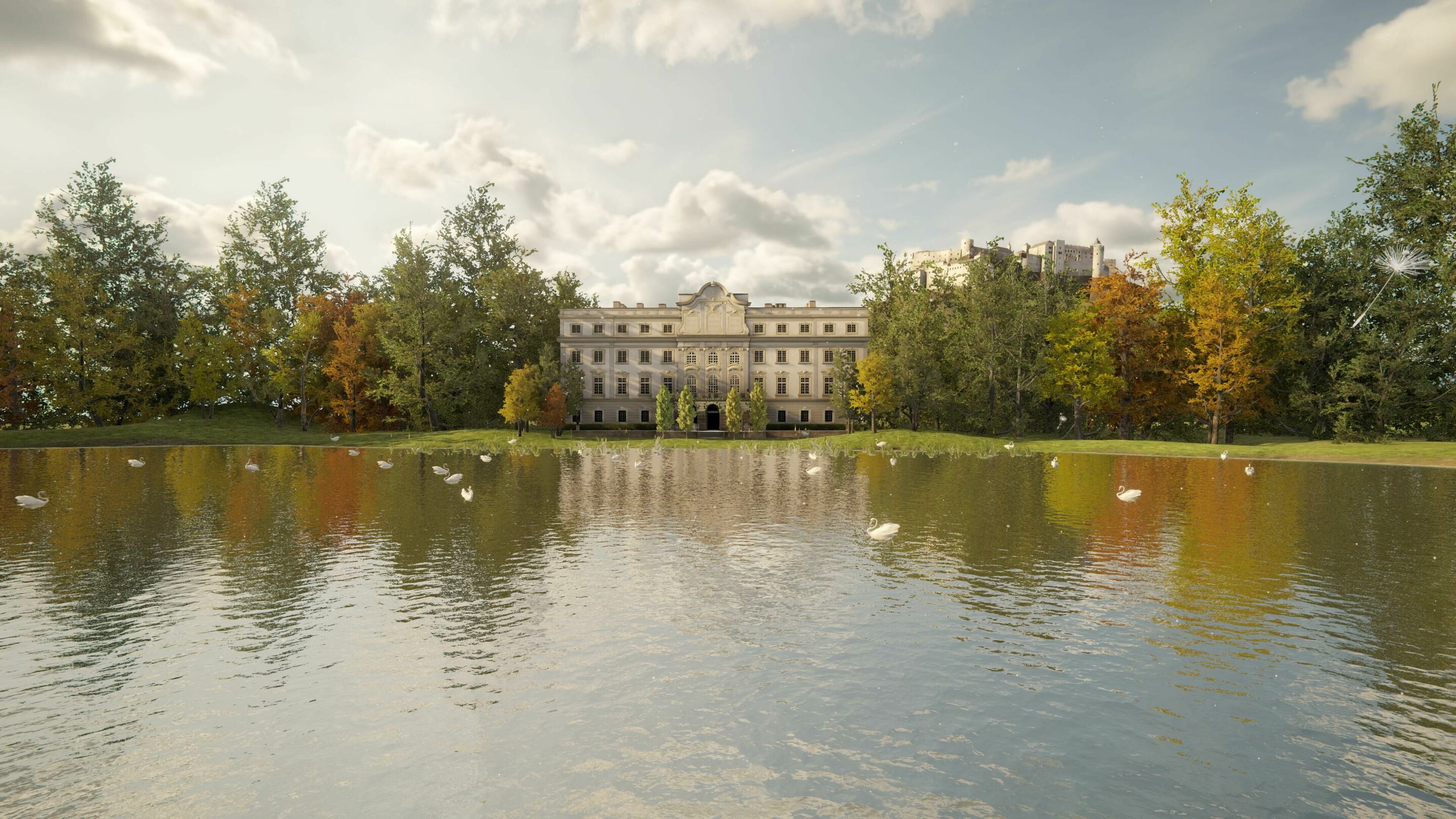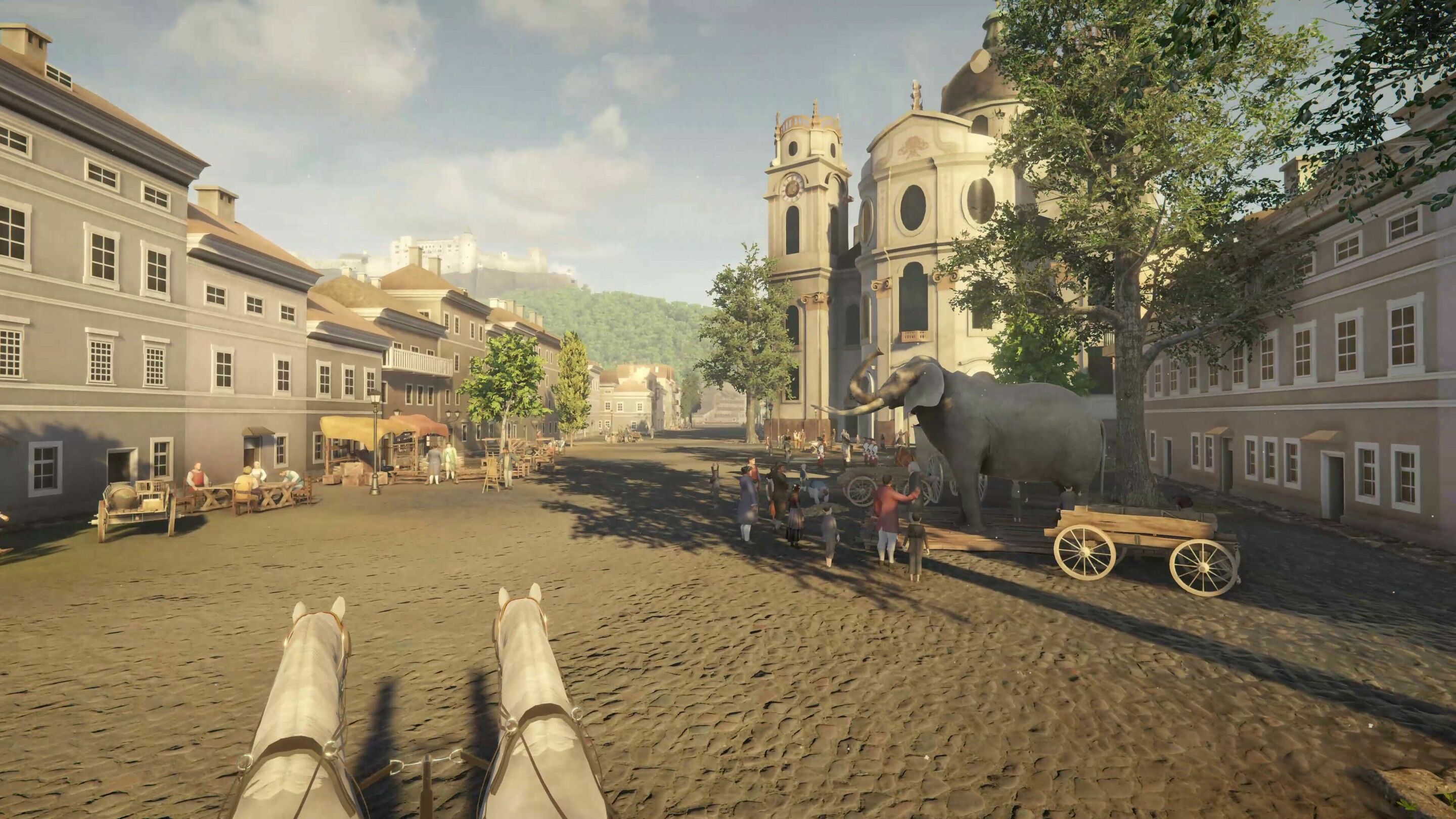Audi is making the history of the Salzburg Festival “experienceable”
- Virtual journey to milestones in the 101 year-old festival’s history in an Audi e-tron
- New technology links virtual reality content with travel movement in real time and creates a particularly intense experience
- A showcase drive through Salzburg demonstrates the future potential of the networked car as an entertainment platform
Virtual time travel in an Audi e-tron: At the Salzburg Festival 2021, Audi is linking tradition with innovation and inviting all festival visitors and interested parties on an eventful drive through this history of the festival. In the back of an Audi e-tron, guests approach several locations that played a particular role in the festival’s development. That journey utilizes technology that was originally advanced by Audi and the company holoride and that carries passengers off to three-dimensional worlds via virtual reality glasses* while integrating vehicle movements into the experience in real time. About 1,000 experience drives are planned during the course of the festival. In the process, Audi is retrospectively celebrating its 25th anniversary as a leading sponsor and the 100th anniversary of the Salzburg Festival after these rides were canceled last year.
“Tradition meets innovation: premium offerings, progressive concepts, and strong roots connect Audi and the Salzburg Festival. For the 25th anniversary of this strong partnership, we are presenting a look forward into the future of our in-car entertainment via virtual time travel back to milestones in the festival’s history. Just as the festival surprises and inspires its audience anew each year, Audi is also continuously creating advancement’ that excites its customers,” says Hildegard Wortmann, Audi Board member for Sales and Marketing.
In the Audi e-tron, passengers experience historical scenes from the festival’s past via VR glasses. Musical milestones are at the center of the three-dimensional animated VR journey through Salzburg. This virtual time travel also includes a look into the future. The immersive technology combines the indicated content in real time with relevant data points from the car, like acceleration and steering as well as navigation information on the travel route and time. This not only responds to the passenger's visual and acoustic senses, but the driving dynamics and the car’s acceleration are also integrated into the experience.
More opportunities for learning and working are in progress
Audi initiated the development of innovative VR technology and tech entertainment startup holoride pushed it forward. In the future, the increasing automation of car travel will not only make new forms of entertainment offerings possible while driving – it will also open up more possibilities for learning and working along the way.
Additionally, the movement-synchronized journey through virtual worlds reduces the motion sickness that often accompanies conventional consumption of visual media in the car. holoride has set its sights on establishing this technology as a new, sustainable entertainment format, together with partners from the automotive and media industries. Audi is one of holoride’s co-founders.
With the further expansion of car-to-X infrastructure, traffic events could also become part of the experience over the long term: stops at traffic lights would be unexpected obstacles in the plot or educational software would be interrupted with a short quiz.
Audi provides the festival’s fleet
Creativity and advancement push the Salzburg Festival and Audi forward. Their lasting, vibrant partnership has existed since 1995. As a leading sponsor, the company helps the festival to offer art one a world-class level. Audi also provides the festival’s fleet of cars that take artists to rehearsals and performances. Additionally, about 2,500 guests use Audi’s shuttle service every year during the festival, which has already consisted of fully electric models in years past. This year, festival visitors can choose between the Audi e-tron Sportback, the Audi RS e-tron GT, and the Audi Q4 e-tron.
Audi has a strong tradition of cultural commitment. With the establishment of the Audi Wind Philharmonic by employees more than 50 years ago, Audi became aware of the need to promote cultural activities in the long term, thereby fulfilling its social responsibility. Audi's cultural program includes its own formats such as the Audi Summer Concerts or the Audi Youth Choir Academy, as well as sponsorship of high-caliber cultural institutions such as the Salzburg Festival Games. Culture at Audi stands for creative dialogue with classical music, theater, jazz, electro, pop or the visual arts. This self-image is brought to life individually at all Audi locations.
Information on registration for and the course of the VR experience in Salzburg is below
www.audi-salzburgerfestspiele.de/VR-experience.
About holoride
German startup holoride is developing a completely new content category for passengers by linking extended reality (XR) content with data points from the vehicle in real time. These data points include physical responses like acceleration and steering, traffic information, and driving routes and times. holoride technology makes a new immersion in every kind of XR content possible, creating a breathtakingly immersive experience and, beyond that, significantly reducing the symptoms of motion sickness. The entertainment tech startup was founded in Munich in late 2018 by Nils Wollny, Marcus Kühne, Daniel Profendiner, and Audi, which holds a minority stake in the startup. holoride was honored as “Best of CES” (Las Vegas, 01/19). Moreover, holoride was selected by Time magazine for its 100 Best Inventions of 2019 list in November of that year, is part of the global innovation platform STARTUP AUTOBAHN powered by Plug and Play, and was able to win the prestigious SXSW Pitch in spring 2021 along with designation as Best in Show.
You can find additional information about holoride at www.holoride.com
*Using virtual-reality glasses during a drive...
- is only permitted for passengers in the second row of seats in the side positions.
- is permitted for people over 1.5 meters tall.
- is only allowed if the user of the virtual-reality glasses cannot reach any object in front of him- or herself (e.g., the rear surfaces of the front seats) with fully outstretched arms (including outstretched fingers).
- is only allowed if the necessary safety measures (e.g., mounting device) are installed on the VR glasses.

